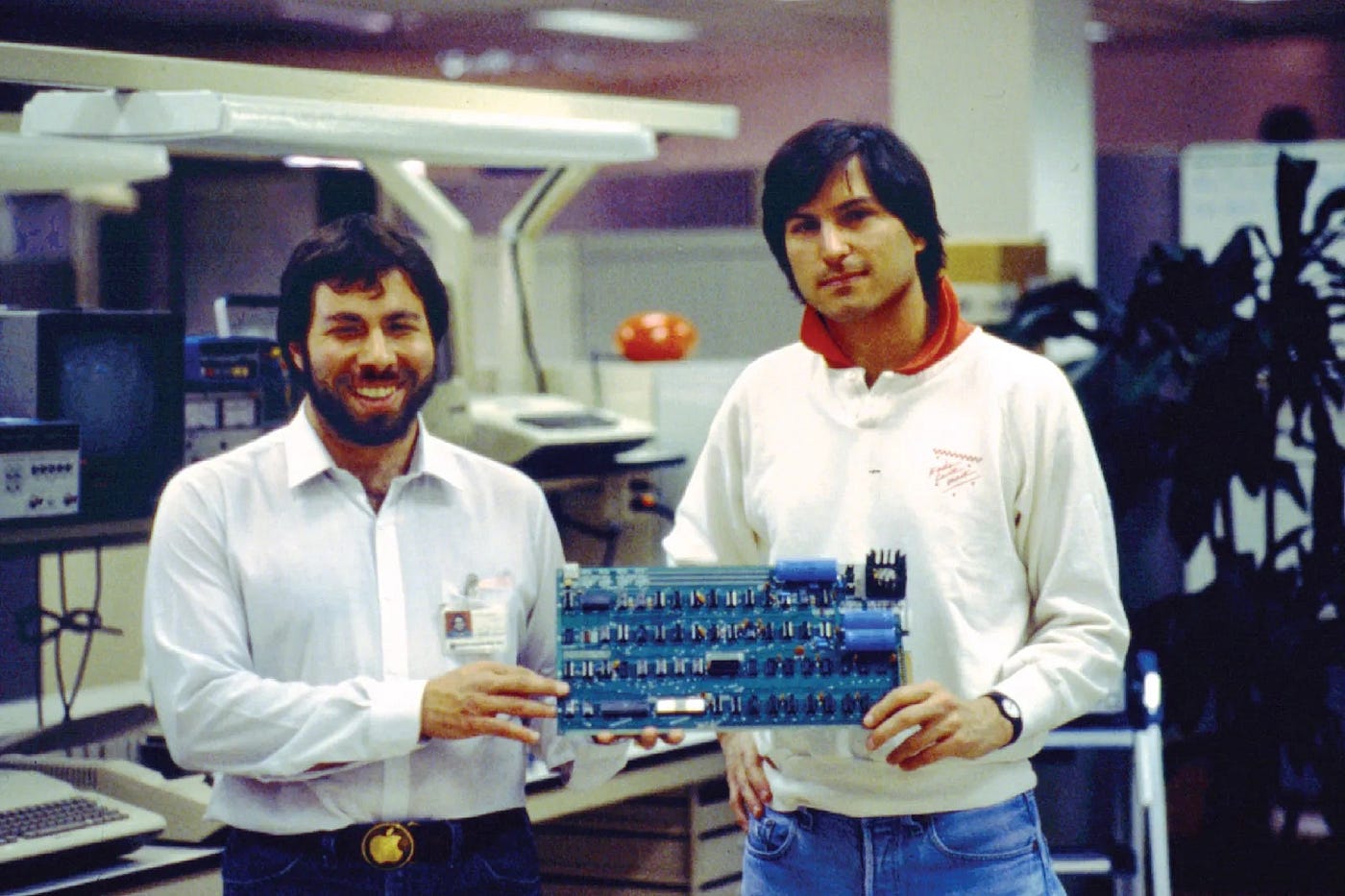In the early 1970s, a technological revolution was quietly brewing in Silicon Valley, California. Computers, once confined to the massive halls of corporations and universities, were beginning to capture the imagination of hobbyists. But these machines were enormous, expensive, and intimidating, accessible only to large institutions. It was an era when technology felt distant and impersonal, controlled by a select few.
Amid this landscape, two young men, Steve Jobs and Steve Wozniak, shared a radical vision: to create a personal computer that was affordable, practical, and empowering. It wasn’t just about hardware—it was about giving individuals control over technology and, by extension, their own creativity and productivity.
Jobs would later compare this idea to a Volkswagen Beetle, a car that had revolutionized transportation by being simple, affordable, and empowering for ordinary people. “We needed a Volkswagen,” Jobs said, “not a Ferrari.”

The Beginning in a Garage
The year was 1976, and the setting was a small garage in Los Altos, California, belonging to Jobs’ parents. Jobs, the visionary, and Wozniak, the engineering genius, worked tirelessly to bring their idea to life. Wozniak designed and built the computer, while Jobs focused on how it could reach and inspire people.
This garage was not just a workplace; it was a crucible for their dreams. With limited resources, they relied on ingenuity and sacrifice. To fund their project, Wozniak sold his HP-65 calculator, and Jobs sold his Volkswagen van.
When they finally unveiled their creation, the Apple I, it was a simple circuit board—not a complete machine. They presented it at the Homebrew Computer Club in Palo Alto, a gathering place for tech enthusiasts. Some were intrigued, while others dismissed the idea. Who would want a personal computer, they wondered?
Facing Skepticism and Doubt
Their journey was fraught with rejection. Banks refused to finance their project, and many dismissed the idea of a personal computer as a mere hobbyist’s toy. Even their friends were skeptical, questioning why they were investing so much time and effort into something that seemed so impractical.
Despite this, Jobs and Wozniak remained undeterred. Jobs’ relentless drive and Wozniak’s technical brilliance pushed them forward. By April 1, 1976, they officially founded Apple Computer, Inc., marking the beginning of a journey that would reshape technology forever.
The Breakthrough: Apple II
Their big breakthrough came in 1977, with the release of the Apple II, the first personal computer to feature a color display and a simple, user-friendly design. It wasn’t just a machine—it was an invitation to a new way of life, empowering people to think, create, and connect in ways that were previously unimaginable.
The Leadership Lesson
The Apple II became a commercial success, solidifying Apple’s place in the tech world. It proved that Jobs and Wozniak’s dream of a “Volkswagen for computers” was not only possible but transformative.
Jobs and Wozniak’s story is a powerful testament to visionary leadership, resilience, and empathy for the user. They didn’t set out to create technology for its own sake. Instead, they sought to solve a problem they deeply understood: the inaccessibility of technology for ordinary people.
Here’s the leadership wisdom their journey teaches us:
- Vision Comes from Empathy: Jobs and Wozniak built the Apple computer because they personally experienced the need for a simple, affordable, and practical machine. Great leaders identify with the struggles of those they serve.
- Perseverance is Key: They faced rejection, skepticism, and ridicule, but they remained steadfast in their belief. Leaders must stay resilient in the face of adversity.
- Empowerment is the Goal: Their vision wasn’t just about building a product; it was about empowering individuals to take control of their creativity and potential. True leadership uplifts others.
Their journey reminds us of Jobs’ iconic words:
“The people who are crazy enough to think they can change the world are the ones who do.”
Let their story inspire us to dream big, persist through doubt, and lead with purpose.